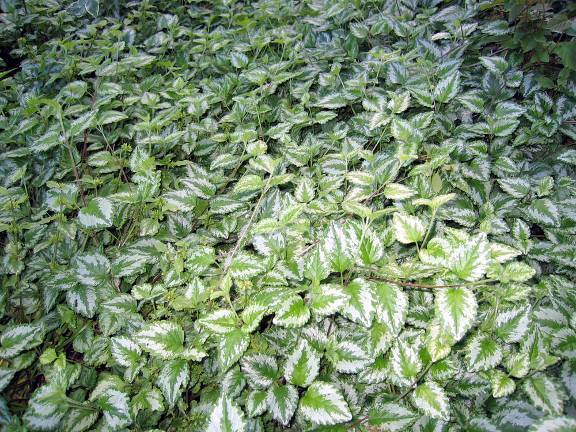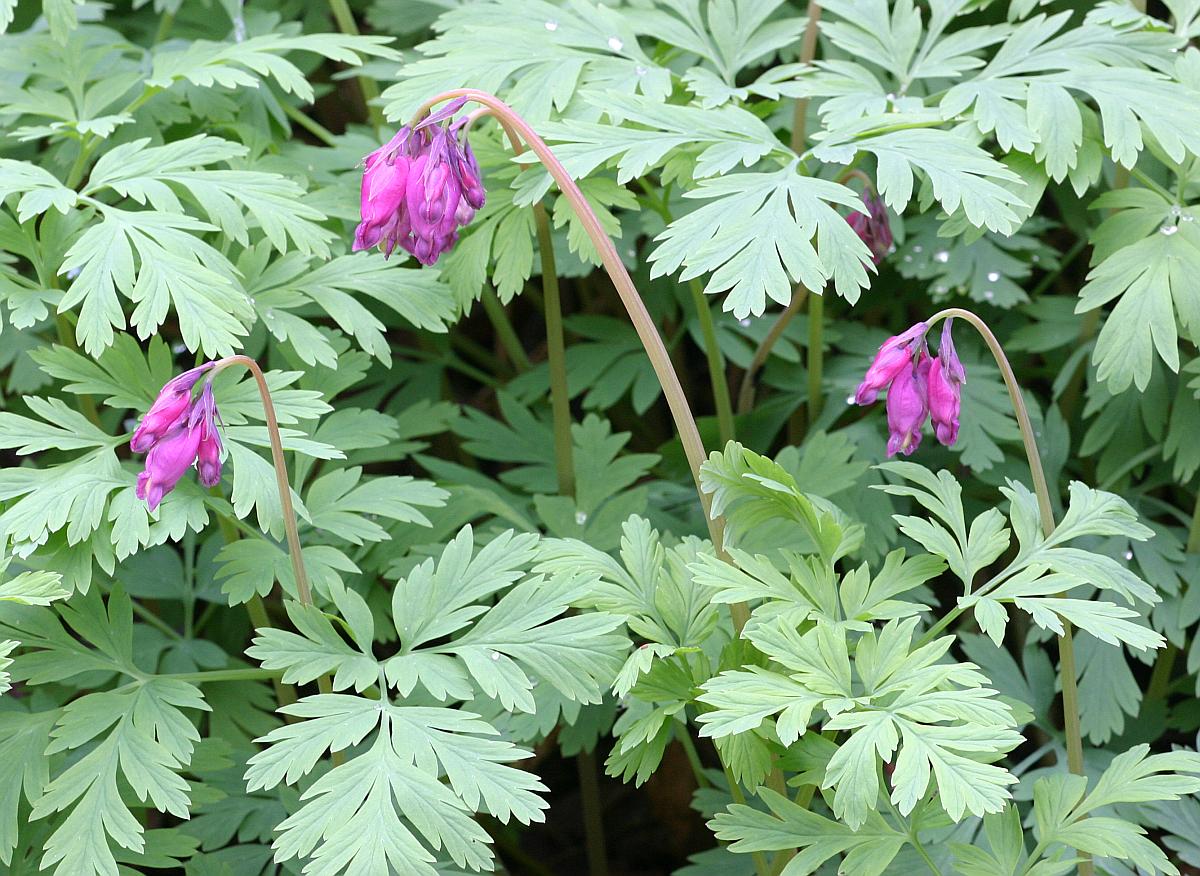Introduced species: Yellow archangel (Lamiastrum galeobdolon)
Characteristics: Yellow archangel, or yellow Lamium, is a fast-growing, rhizomatous, trailing (sometimes upright) perennial ground cover. Stems are square in cross-section, and are typically less than 3 ft (1 m) tall. The hairy leaves are arranged in opposite pairs, and are variegated with white or silvery-grey markings, ovate, and coarsely toothed, roughly 2 inches (5 cm) long. Flowers are yellow and tubular, growing in pairs of clusters close to the stems, and borne from April to June; they look a bit like a miniature version of Audrey II from “Little Shop of Horrors.” It may have a somewhat unpleasant odor, but not as strong as that of other mint-family plants.
Spread: Yellow archangel reproduces both vegetatively and by generous seed production, and can spread rapidly in gardens and natural areas. It tolerates a variety of soil and light conditions, making it a potential invader in many habitats, including otherwise healthy, mature forests. Root and stem fragments can both resprout, making dumping of this species a major route of introduction. Once established, yellow archangel readily overgrows low-growing native species, and may also climb over stumps and other obstacles. It has even been known to overrun English ivy!
Control: Small infestations can be dug out by hand, though any root fragments that are left are likely to resprout. Sheet mulching may also be an option, though information on this is lacking. Appropriate herbicides can also be effective for infestations too large to remove manually. Any effort at eradication will likely involve multiple years and monitoring for regrowth in treated areas.
Native Replacements: Woodland strawberry (Fragaria vesca) is an elegant, shade-tolerant perennial ground cover that does well in habitat used by yellow archangel. Bleeding heart (Dicentra formosa—pictured), with beautiful pink flowers and attractive foliage, spreads freely, and would also make an excellent replacement for yellow archangel.



